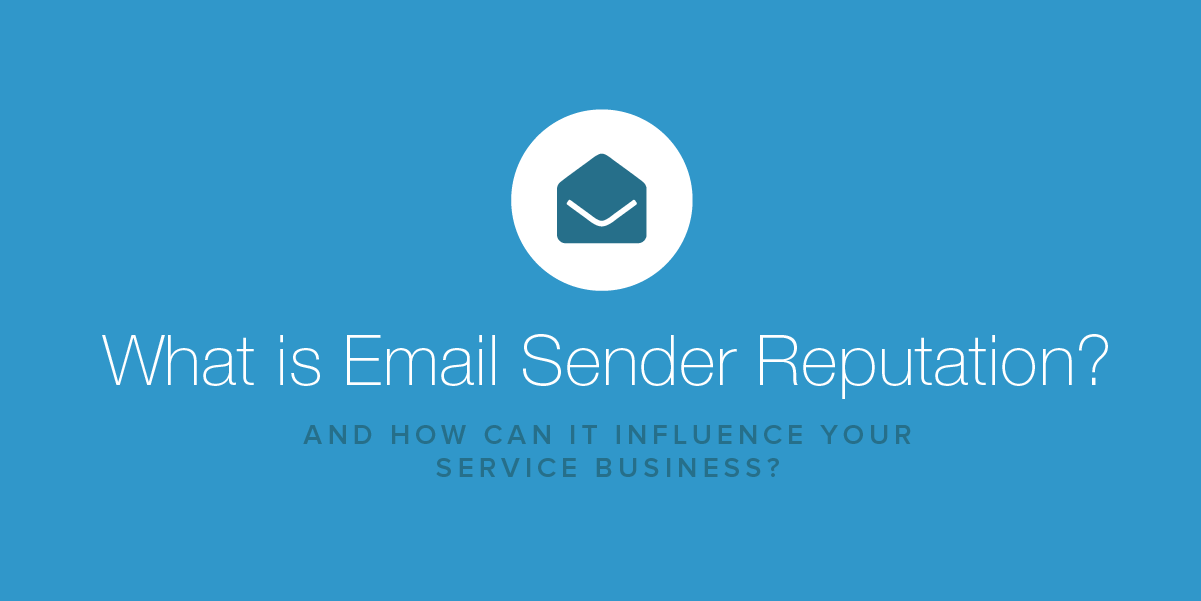What Is Email Sender Reputation? How Can It Influence Your Service Business?
- May 3, 2019
- By: Vonigo
When you launch an email marketing campaign for your service business, you can’t expect to just write the content, hit send, and start hoping that it’ll positively affect your return on investment (ROI).
You need to look after the quality of your email list, the relevance of your content, and whether you have a permission-based email list. All these factors can impact your email sender reputation (ESR).
If you want to succeed as an email marketer, it’s important to understand ESR and its impact on your business.
What is ESR?
Email sender reputation refers to the score assigned by email inbox providers that shows whether you’re trustworthy or not. It is based on several components, such as content, sending history, infrastructure and authentication, complaints, engagement, quality of contacts, and IP permanence.
Determining factors may also include your inclusion on blacklists, the frequency by which your emails hit spam traps, the number of times your emails bounce back after being sent to unknown users or other reasons, and the number of recipients that hit the unsubscribe button. Bottom line: If you have low ESR, your emails may be directed to the spam folder instead of the inbox.

How does ESR Affect Your Service Business?
ESR matters to any organization that relies on email to increase website traffic, job bookings, or revenue, and to communicate transaction details, improve customer satisfaction, increase customer retention rate, and establish brand awareness.
To achieve these, the emails that you send must be delivered to your intended recipient’s inbox, opened, and engaging enough to convince the recipient to take action.
If you have a good ESR, your emails can overcome the hurdles of the rigorous filtering technology used by email inbox providers to protect their clients. You can only build a strong ESR if you have engaging content delivered to the right audience at the right frequency.

How Do You Know if You Have a Bad ESR?
Regular monitoring of your email sending reputation is important if you don’t want to catch it too late and be unable to protect it. Fortunately, you can find out about your sending reputation by looking at your email sending history to spot trends, patterns, and other irregularities.
Check your open rate (the number of people who view your emails) to see how it fares against the industry standard, which hovers around 20%. If you haven’t breached that number or if it has been decreasing, it signifies the same downward trend for your email sending reputation.
There are also several websites that offer to test your email sending reputation, with some even doing it for free. You can try them online simply by entering your IP address to the sites’ lookup page and have your reputation assessed.
How Can an ESR Get Damaged?
Many email senders often end up puzzled over their lower ESR, only to later learn that they are unknowingly damaging it with their email sending practices. Here are the most common mistakes that may further cause damage to your ESR:
- Using invalid email addresses. In many cases, contact data are invalidated due to being misspelled, especially when you use mobile devices with an autocorrect feature. Make sure that the email addresses you use are correct before sending your emails. The best practice is to also use a real-time email validation tool to check if the email address really exists.
- Not following a consistent email schedule. If you send emails too often, you end up annoying your recipients and getting complaints, but if you email too little, you risk losing opportunities to generate leads or sales. The solution to this is to stick to a consistent email schedule and tell your recipients how frequent your emails will be.
- Compromising content quality. When you draft your email, make sure it’s mobile-optimized, not overselling, has working links, has a readable format, and provides value.
- Getting emails from data brokers. It’s a big mistake to buy email lists. It would mean sending emails to people you haven’t connected with and don’t trust you yet. In most cases, recipients from a purchased email list won’t open your email, let alone engage with you. They are also more likely to mark your messages as spam.
- Failing to update your email list. It’s important to remove inactive, unengaged recipients from your email list. If they keep ignoring your emails, your content will be routed into the spam folder. Schedule your email cleaning process at least once every quarter.

How Can You Improve ESR?
Aside from avoiding the mistakes mentioned above, there are other ways to build a strong ESR. It all starts with getting positive results from conducting your email campaigns. You can do the following:
- Include only permission-based emails. Only send emails to recipients in your permission-based lists, such as your customers and other email subscribers who opted-in to receiving your emails.
- Use your own domain. Every successful email sent using your domain name is also counted as your success, positively affecting your ESR.
- Be an authenticated sender. By authenticating your email sending domain, with your legitimate DKIM signature, the receiving domain will likely be more positive in handling your emails.
- Only send relevant and targeted content. Segment your email list to send people highly-targeted emails, those that are totally relevant to each segment. It also helps to use dynamic content to boost subscriber engagement.
- Maintain a checklist for all your email campaigns. Before you start sending emails, go over them a few times more and compare them to your checklist. This checklist includes a good subject line, pre-header, and accurate links. It should also include adding a good call-to-action (CTAs), and proofreading it multiple times
- Prioritize active email subscribers. Identify your most active email subscribers and tag them as priority email recipients. Every email they open and interact with is counted a success and will help your ESR.
Your email sender reputation will heavily affect how your emails are delivered. By using the best practices mentioned above, sticking to permission-based emails, and monitoring your email marketing results, you can cultivate a strong ESR and increase your chances of successful email marketing campaigns and seeing a high ROI.

Want to learn about how service business management software can help you manage and grow your business? Book a free, private demo of Vonigo.



